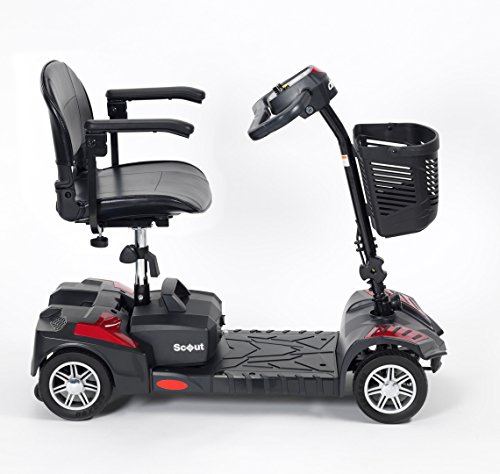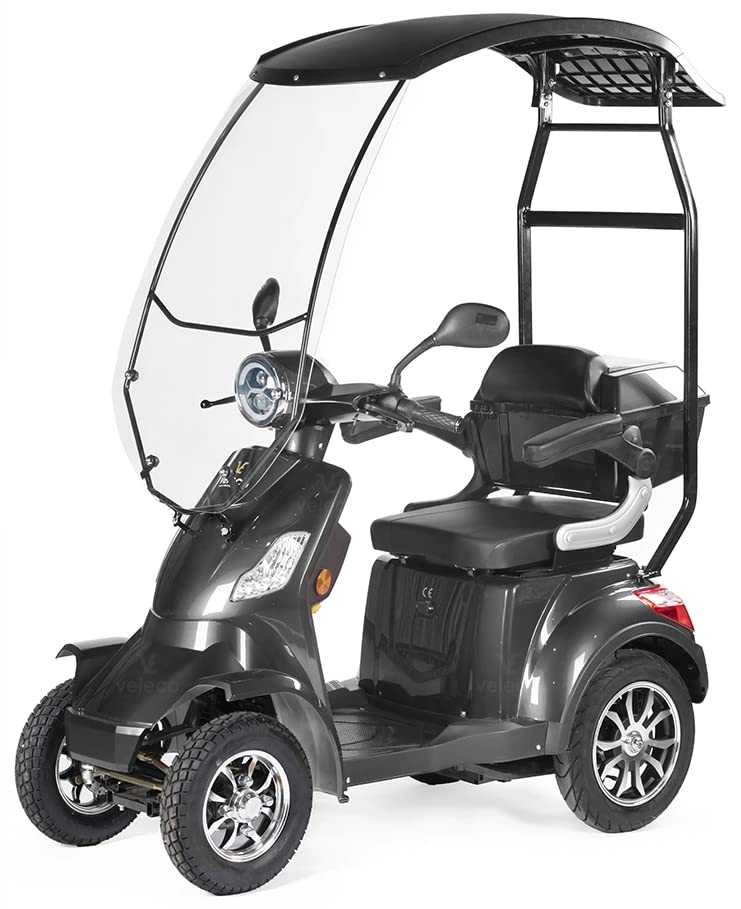Modern Mobility Solutions: 10 Things I'd Like To Have Known Earlier
페이지 정보

본문
 Modern Mobility Solutions
Modern Mobility SolutionsDiscover how innovative technologies are changing the way we move. These solutions, from electric vehicles to personalized services, are changing how we move.
Discover how optimizing transportation systems will result in to a more efficient system which will lead to less congestion and more sustainable urban development. Our MQTT EMQX platform is ideal for real-time data exchange between these systems, as it is flexible and designed to accommodate a high volume of devices simultaneously.
cheap electric mobility scooter Mobility
Electric mobility is the use indoor electric mobility scooter power to power vehicles such as electric bikes and electric cars. This technology reduces carbon emissions and air pollutants and provides consumers with an easier and safer travel option. The transition to e-mobility isn't without its obstacles. These challenges include minimizing the cost of energy, reducing range anxiety, and ensuring the infrastructure for charging.
To tackle these challenges there are solutions emerging across the world to promote emobility and reduce environmental impact. These solutions include using battery swapping techniques, improving battery technology to extend range and reduce charging times, and increasing the number of charging stations. Governments can also motivate consumers to buy EVs by offering tax credits and subsidies.
Increasing consumer demand for environmentally friendly transportation options has prompted an explosion of innovation to improve sustainability. This includes mobility-as-a-service, smart parking and traffic management systems, shared Electric Mobility Scooters For Adults With Seat mobility, and even high-speed electric vertical take-off and landing (eVTOL) taxis.
E-mobility plays a key role in a bigger picture of the future. It reduces emissions and it improves the mobility of urban populations. But it requires a large-scale change in the transportation system and a new, sustainable energy model to fully benefit society.
Therefore it is crucial to be aware of the potential consequences and risks associated with each aspect of this revolution. This is why it is important to consider the impact on the environment, the economy and the entire society. There are numerous tools that can be used to evaluate the impact of technological advances. They include life cycle assessment methods.
These tools can assist companies make informed choices about how to invest in e-mobility. By integrating different solutions into their business they can maximize the benefits of mobility. This will ultimately lead to an eco-friendly future for the entire planet. TUV SUD, with a century's worth of experience in automotive safety engineering and a wide range of services, can provide comprehensive assistance to companies on their journey to eMobility. We're your single point of contact to ensure the safety of your electric 4 wheel mobility scooters mobility developments.
Connectivity
In the age of customer experience that has become the new benchmark for service seamless integration is essential to creating an effective mobility solution. Learn how deploying connected vehicles and connecting them to an intelligent system can improve the way your business operates.
The rise of shared mobility services is changing the ways people travel. These innovative approaches to urban transportation offer alternatives to cars and are a promising tool to reduce congestion and carbon emissions in cities.
However they face a number of obstacles to their establishment as viable alternatives to personal car ownership. They are impacted by the need for a robust transportation infrastructure and the need to make fares affordable and the implementation of the equity principle which calls for the same accessibility to mobility solutions for all sections of society.
Despite these obstacles, the growth of shared mobility has been rapid. A lot of these solutions rely on data and algorithms that are smart to enable travellers to choose and purchase a variety of transportation options through a single app. They also provide real-time updates as well as personalised services which makes them easier to use than traditional methods of commuting.
One of the main reasons for the rapid growth in this sector is the increasing availability of affordable electric vehicles and charging stations. This is why increasing numbers of consumers are turning to these green and efficient modes of transportation. And they're being joined by towns and cities, which are investing in sustainable, eco-friendly transport infrastructure to promote cycling, walking public transit, walking and sharing vehicles as alternatives to cars.
Another factor driving the shift towards sustainable commuting is the use of micromobility solutions. These vehicles that are lightweight mobility electric scooter - usually electric-powered scooters and bikes - are being integrated into urban transport networks, offering the first and last mile option for commuters and decreasing the need for private vehicle ownership.
To overcome these issues and ensure the viability of micromobility, it is essential that public-private partnerships work together. This is particularly important for solutions to urban mobility, which require a large investment and must be tailored to local circumstances. This model is demonstrated by MaaS platforms (mobility as service) which were developed by a consortium of urban transport operators and technology companies.
Sustainability
Modern mobility solutions are increasingly concerned about sustainability as both consumers and governments require environmentally friendly transportation options. Find out how seamless integration between transportation modes, real-time information, and personalised services transform the way you commute and help reduce environmental impact.
Fossil fuel emissions contribute significantly to climate change. They also contribute to pollution in central city areas, congestion, and public health issues and other health issues. By promoting sustainable new mobility solutions, such as cycling and walking, people will benefit from greater efficiency in their journeys as well as a healthier quality of life.
Another method to encourage sustainable mobility is by making use of shared vehicles which generate more revenue from passengers' tickets than their costs of operation. They therefore are less likely to need taxpayer funds as compared to traditional public transportation.
The pursuit of sustainable mobility however, requires a holistic approach that goes beyond the reduction of car traffic and improving existing infrastructures. It must involve the promotion of sustainable transportation alternatives and the redesign of urban spaces to remove it from the encroachment of private vehicles.
Many smart mobility initiatives will increase the appeal and accessibility of urban areas by facilitating the modal shift to walking and cycling, as well as improving conditions for public transport, biking, and teleworking. They could also include strategies to increase the perceived value of motorized vehicles as well as encourage the shift to public and active transportation.
For example, the implementation of congestion charges encourages motorists to consider alternatives to their own vehicle. Furthermore, the use intelligent road systems increases the safety and efficiency of vehicles by optimising traffic flow. The IoT allows vehicles and infrastructures to communicate. This allows for real-time monitoring of driving habits and the identification of congestion sources. The data used to adjust traffic management systems accordingly to reduce congestion and improving the overall operation of the transportation system. This means a better quality life for all, with less noise pollution.
Enterprise Mobility
Enterprise mobility refers to the ability of employees to work from anywhere on a variety devices. This includes mobile devices, cloud storage and applications that allow workers to access their data and connect with colleagues from anywhere. Enterprise mobility solutions can improve communication and facilitate more efficient decision making. They can also cut down on the amount of paperwork and storage space needed. Employees could, for instance upload a presentation on cloud-based storage from their desktop PC, and then access it on an mobile device to present to clients.
The modern industry of mobility is constantly changing to meet the demands of both businesses and consumers. The growing concern for sustainability is driving the demand for eco-friendly transportation options. This can be achieved by a range of innovative solutions. Telematics systems, which enable infrastructures and vehicles to communicate with one another and improve traffic flow and reduce congestion, are among these solutions. These solutions can also connect various modes of transportation to create an effortless, personalized experience.
Mobility solutions should ultimately be designed to enhance the experience of guests and customers. Hotels, for instance could benefit from providing its staff with mobile devices to quickly and easily access guest information. This will allow them to better serve their guests, thus increasing customer satisfaction and loyalty. Additionally healthcare professionals can provide better care to patients by providing them with the tools they need to work remotely.
 To enable companies to implement these features, they should invest in enterprise mobile management (EMM). This includes devices and software that can manage the security of business-owned and personal devices, safeguard sensitive information from cyber attacks and provide a pleasant user experience. It can also save companies money by avoiding the expensive costs of replacing or repairing damaged or stolen devices. EMM can also support BYOD initiatives, allowing employees to utilize their devices for work. It is essential to establish an acceptable use policy prior to implementing EMM. This will help to set clear expectations about employees' behavior and help reduce the risk to the security of the data of the company.
To enable companies to implement these features, they should invest in enterprise mobile management (EMM). This includes devices and software that can manage the security of business-owned and personal devices, safeguard sensitive information from cyber attacks and provide a pleasant user experience. It can also save companies money by avoiding the expensive costs of replacing or repairing damaged or stolen devices. EMM can also support BYOD initiatives, allowing employees to utilize their devices for work. It is essential to establish an acceptable use policy prior to implementing EMM. This will help to set clear expectations about employees' behavior and help reduce the risk to the security of the data of the company.- 이전글Evolution Korea It's Not As Hard As You Think 25.01.20
- 다음글Buy Driving License Online It's Not As Expensive As You Think 25.01.20
댓글목록
등록된 댓글이 없습니다.




